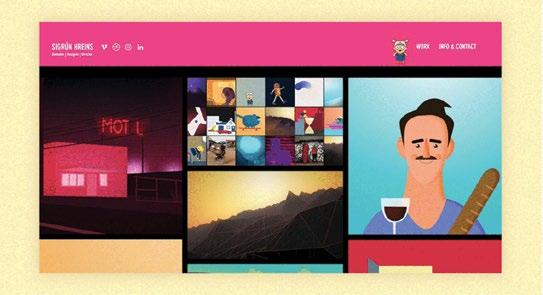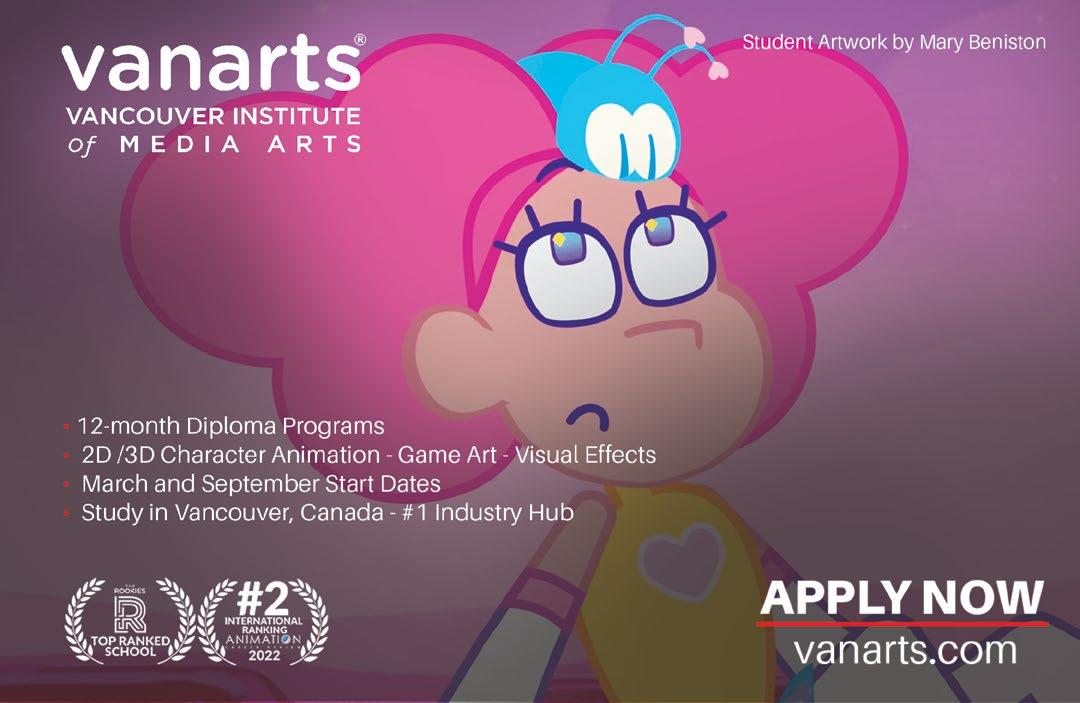
4 minute read
10 Tips to Help with Your Job Search
A young animator at DreamWorks Animation offers solid advice on finding your dream job!

- By Maarten Lemmens -
1. Make connections! If you’re applying for an artistic role at an animation studio, you typically represent yourself with a demo reel or portfolio. More often than not, there are hundreds of other candidates checking off the same box as you with great portfolio work. At that point, a lot of studios start leaning into “how will this personality fit into our company?” This information then comes from a short interview or recommendations from current employees. This past year, at my current animation job at DreamWorks, I’ve been asked multiple times if I knew someone from college or a previous job that they were considering, and if I believed they would be a good fit. Make sure you consider your co-workers and classmates as people you can grow with and learn from. Your ‘competition’ is out there in the world, but the people around you are not even 0.1% of that, so it’s much more useful building a positive bond with them.
2. Use influential ideas and emotion. These next two sections apply more to animators and illustrators. A lot of the time, animation studios see portfolios that contain similar abilities. To stand out the most, apply ideas to your work that have not been seen or heard before. Artists often rush into their work to get the end-result as quickly as possible. Think of ideas that relate to people, or in animation, ones that switch emotion to keep the audience engaged. For example, putting a person put into an environment that they’re not usually in, or an emotional topic that is relatable but not talked about much. Make it stand out!

3. Tailor your portfolio to a specific studio. Every studio has their own style, and obviously they would love to recruit artists that share elements of that style for an easy fit. If you’re applying to feature film studios such as Disney, for animation you’d want to add more acting animations. If you’re applying to Sony Pictures Animation, it would be good to try out some pushed cartoony body mechanics. This goes for art, too. Look at the studio you want to work for, see what they provide and guide your portfolio toward it.
4. Find your place. Do your research. There are so many different areas within the animation industry. Movie and TV animation is based-to-camera, and you can decide where the audience looks. On the other hand, video game animation needs to appeal from all angles — there’s no cheating. The styles and ways of creating art are all very different from each other. At one company you could use mocap data or reference videos, while at another company you may need everything to come from your imagination.
5. Choose your workplace wisely. Different studios are run differently and don’t always appeal to everyone. A topic to consider when applying or interviewing with a company is overtime. Some companies ask you to do massive amounts, while others give you plenty of work that forces you into recurring overtime requests. Some people love the chance to earn and work more, while others would love it to be more of an option if they choose to do it. There are studios for everyone! When you’re looking at wages, don’t forget to consider the cost of living in that area and moving fees. Making $30 per hour in Florida isn’t the same as receiving that in California! In addition, contact a current employee and find out how the environment is. Is it competitive, or do people genuinely care and want to build each other up?
6. Brush up on your interview skills. When a company asks to interview you, they’re interested in your talent! Congratulations! Now is the time to do extra research about this company so you don’t tell Disney that you loved Bee Movie. Try to make sure you have three questions ready for each interview phase you go through. Be yourself — they’re looking for a candidate that they’d love to work with, grab lunch with and say hello to at a company event.
7. Explore online courses. At DreamWorks, there are plenty of artists and animators that are teachers at online classes that anyone could take for a fraction of the price of America’s sky-high college tuition fees. It’s also an amazing opportunity to create connections, since many of these online students have ended up working with their teachers here. I also highly recommend it to focus on what you’re interested in and have an industry-level teacher assist you to hit that industry standard.
8. Don’t rush the basics. Just like not rushing the creative ideas in your art, it is important not to rush the learning process either. Just as illustrators should take their time on shape, value and color theory, animators should take time with simple animations, like a ball bounce. People often rush this, but DreamWorks and Pixar make most of their new hires start with ball bounces. The basics return in every piece of art — perfect and apply!
EFFECTIVE FEEDBACK: Left, attending studio portfolio reviews at events like CTN eXpo is a great way to receive professional guidance on your work. Right, an example of an eye-catching portfolio by Icelandic animation artist Sigrún Hreins. (See more clever examples at wix.com/blog/creative.)


9. Improve secondary skills and hobbies. Drawing isn’t for everyone, but it is a good skill to have in the animation industry. So is knowing the other parts of the pipeline at a studio. Get familiar with the capabilities of what goes on around your job in the production process.

10. Have fun and be yourself! Like it states, just have fun! We’re all here to live a dream and share our love for animation. Be yourself and enjoy the ride! Everyone’s story goes on unique paths and at different speeds. ◆
Maarten Lemmens is a full-time animator at DreamWorks Animation. He recently animated on the Oscar-nominated Puss in Boots: The Last Wish. Born and raised in Belgium, he studied computer animation at Ringling College of Art and Design, where he created his award-winning short film Goalie.










